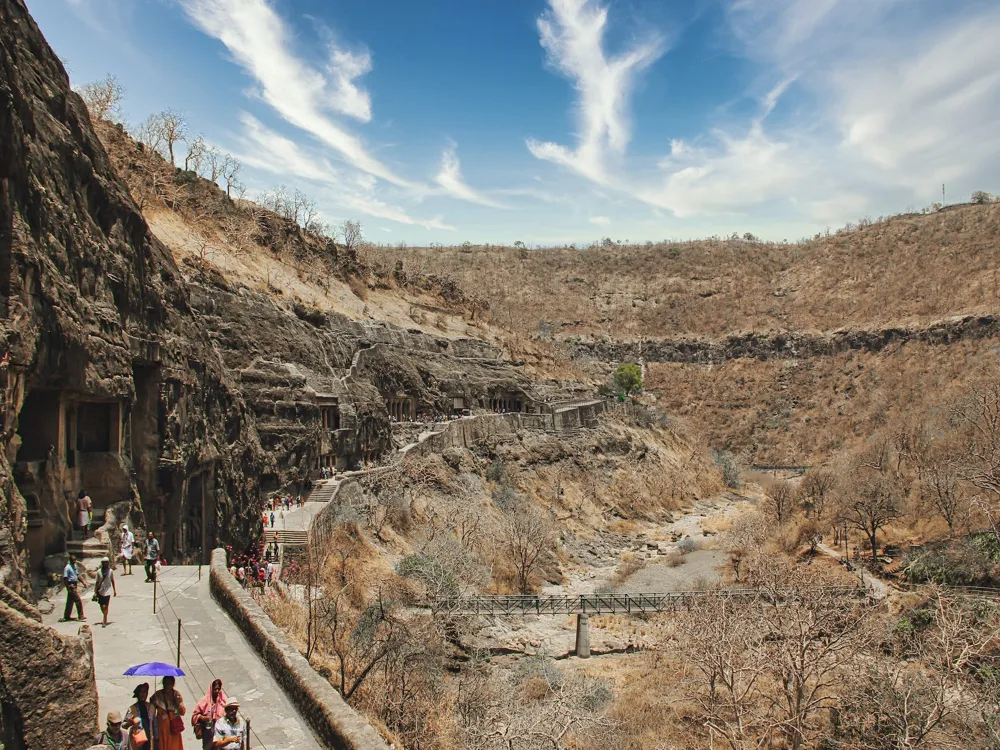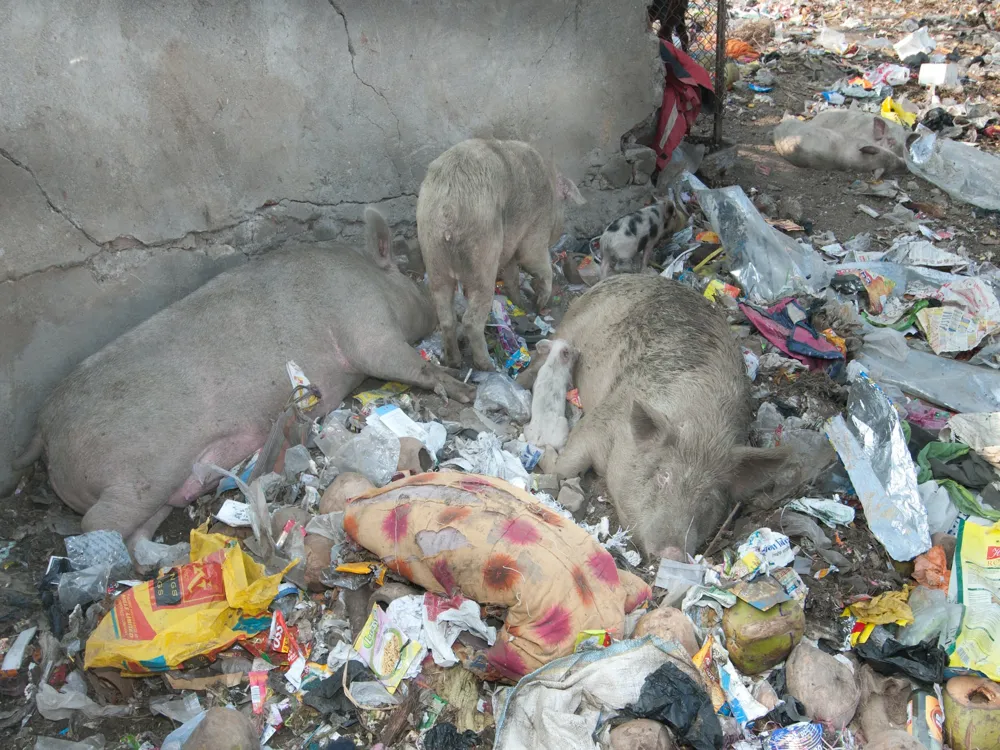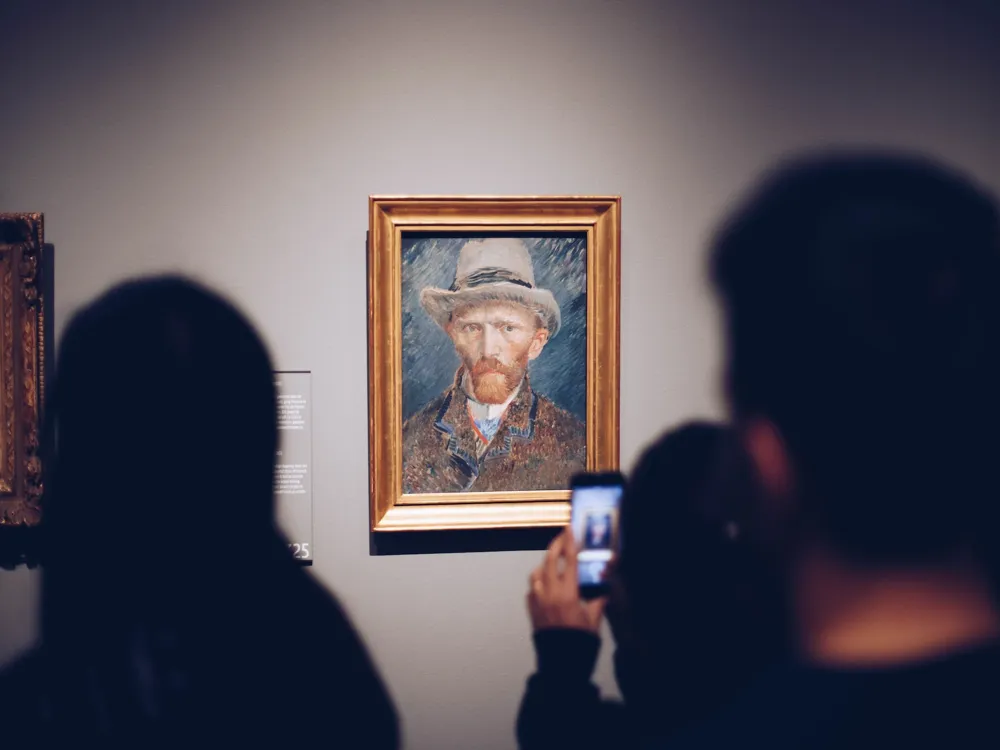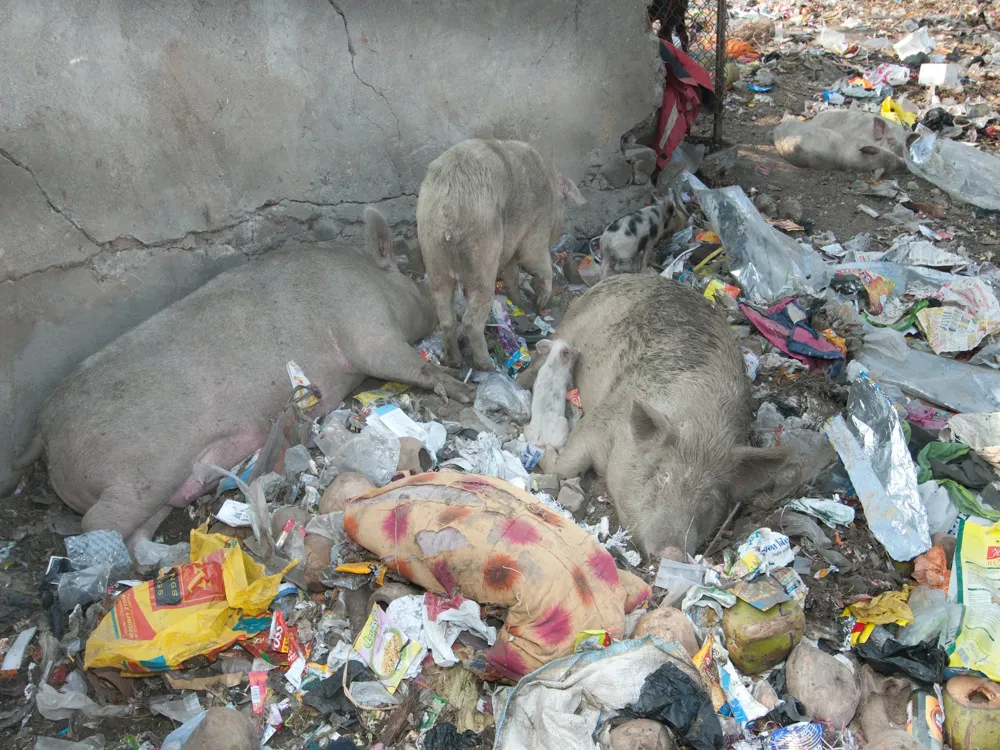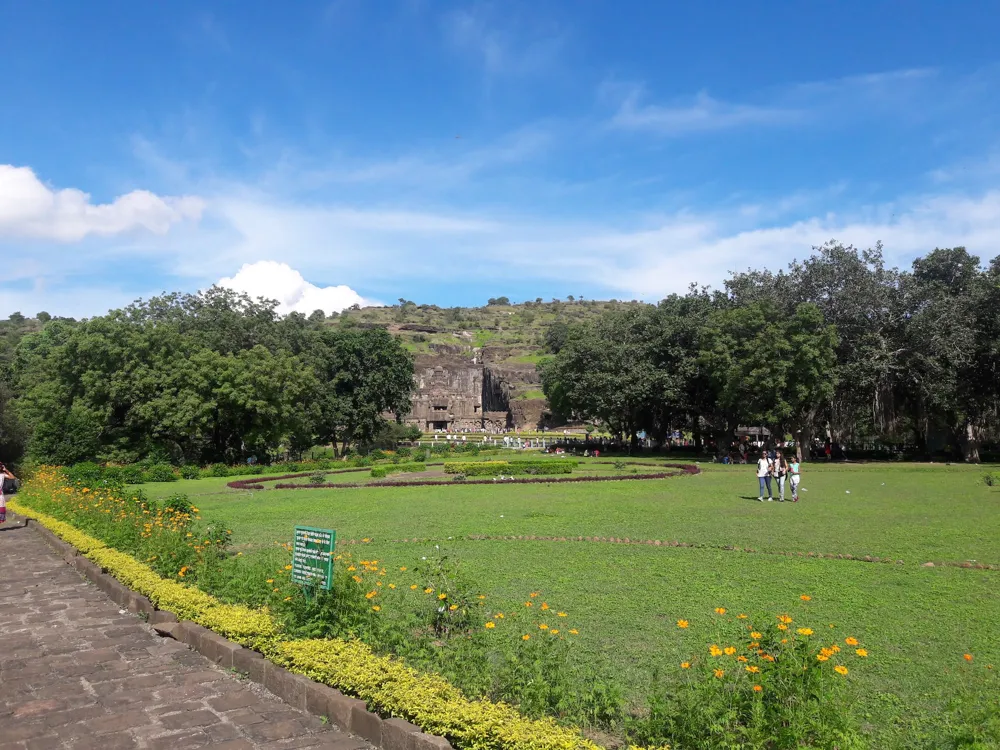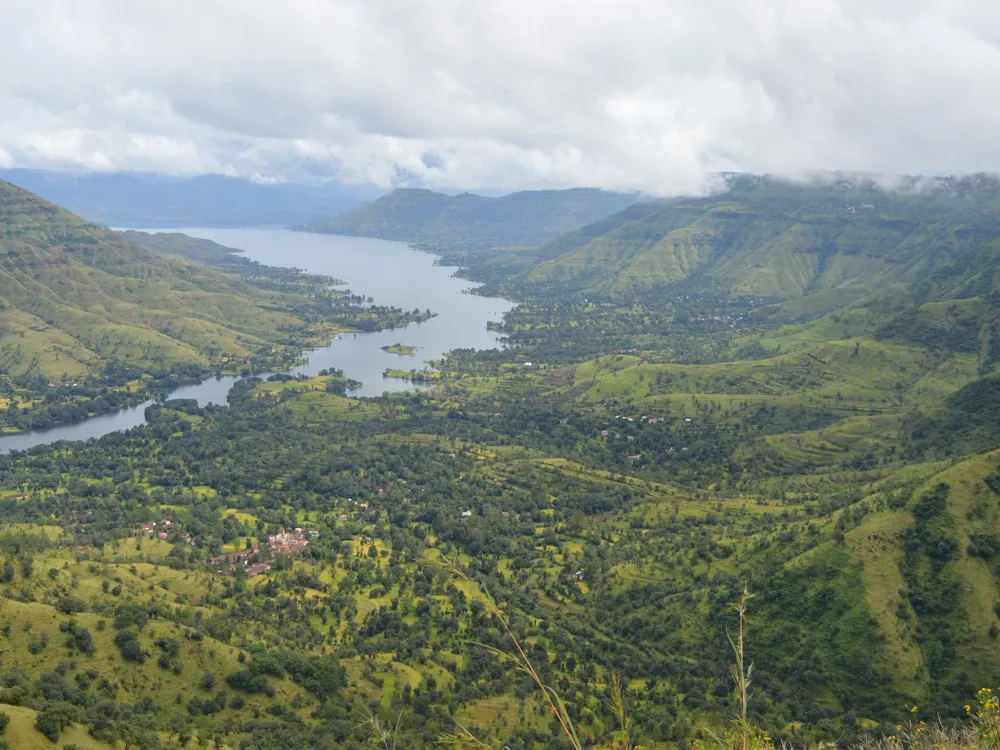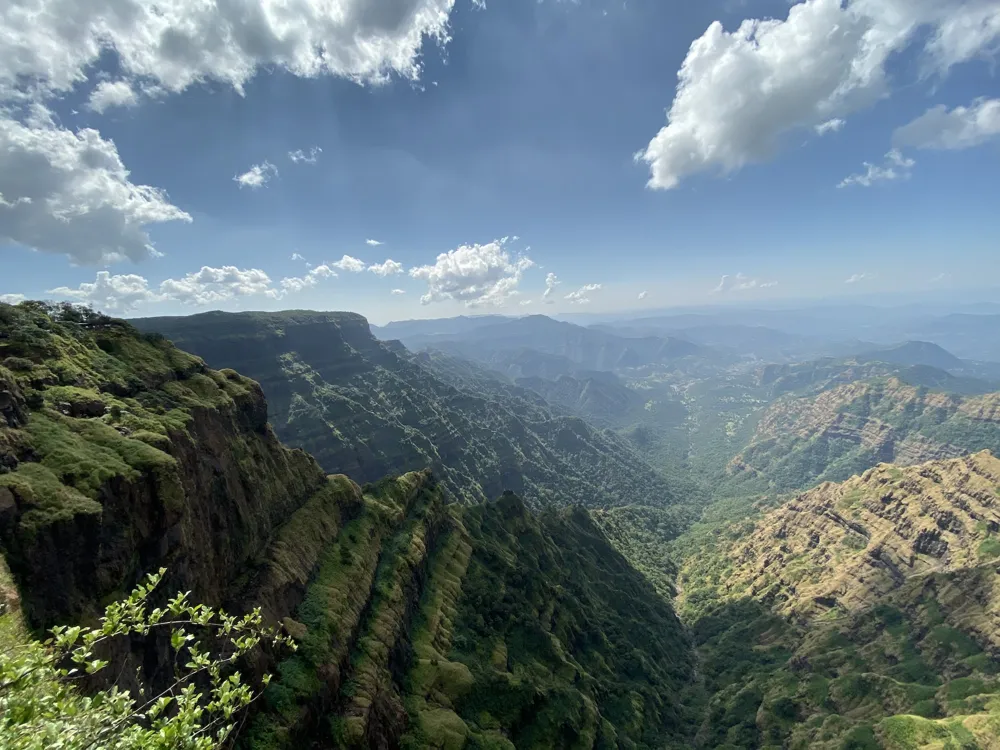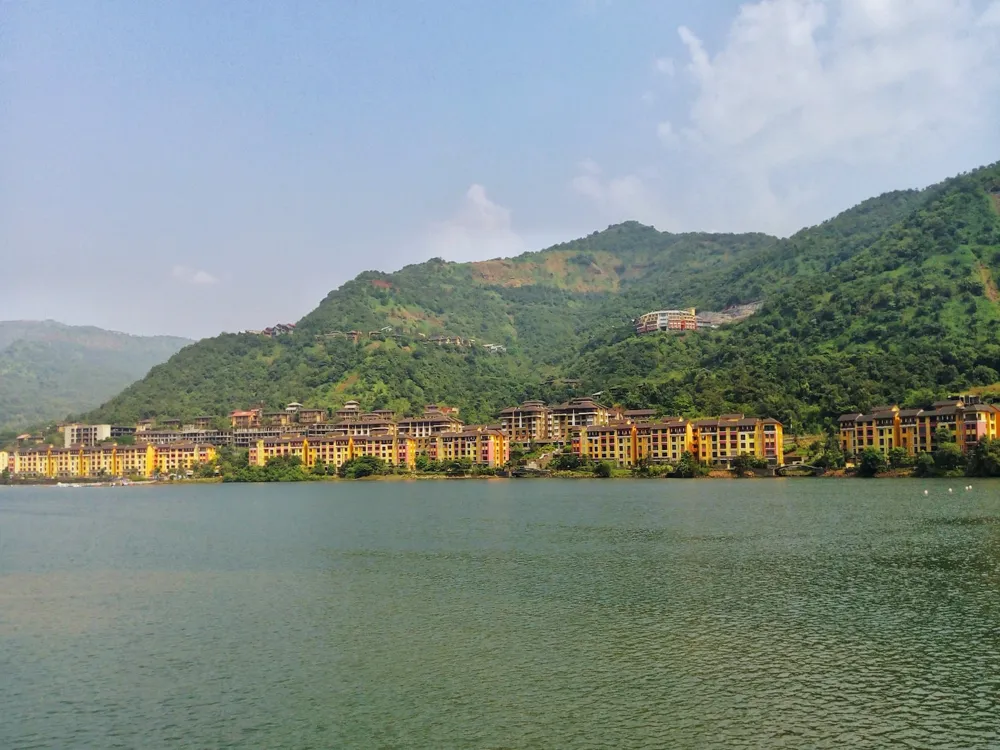Aurangabad, a city in the state of Maharashtra, India, is a fusion of rich history and vibrant culture. Named after the Mughal Emperor Aurangzeb, it serves as a tourist hub with its awe-inspiring historical monuments and cultural heritage. The city's history stretches back to the 2nd century BCE, evident in the nearby Ajanta and Ellora Caves, UNESCO World Heritage Sites known for their stunning rock-cut architecture and exquisite paintings. Aurangabad is often referred to as the 'City of Gates' due to the 52 gates built during Mughal times, each with its unique history and architecture.
The city's cultural fabric is a tapestry of various communities and traditions, contributing to a rich culinary scene, bustling markets, and vibrant festivals. Aurangabad is also known for its silk and cotton textiles, particularly the Himroo and Paithani fabrics, showcasing intricate designs and craftsmanship. The city's juxtaposition of ancient history, cultural diversity, and modern development makes it a fascinating destination for travelers.
Aurangabad's architecture is a testament to its historical and cultural significance. The city is home to two of the most famous architectural marvels in India - the Ajanta and Ellora Caves. These caves are renowned for their magnificent rock-cut sculptures and paintings, dating back to between the 2nd century BCE and 650 CE. The Ellora Caves, comprising 34 caves, are an impressive mix of Buddhist, Hindu, and Jain monuments, and are known for the Kailasa Temple, the world's largest monolithic structure carved out of a single rock.
Besides the caves, Aurangabad's urban and military architecture, influenced by the Mughals, is visible in the Bibi Ka Maqbara, which closely resembles the Taj Mahal, and the Daulatabad Fort, known for its strategic positioning and robust defenses. The city's architecture is not only a reflection of its past rulers and religions but also an embodiment of the artistic and cultural zenith the region reached in different eras. These structures provide an invaluable insight into the architectural genius and history of India.
The ideal time to visit Aurangabad is during the winter months from October to March. The weather is pleasant, with cooler temperatures making it comfortable for sightseeing and exploring the outdoor historical sites.
Aurangabad is well-connected by buses, auto-rickshaws, and taxis. For a more authentic experience, opt for auto-rickshaws for short distances. However, make sure to negotiate the fare beforehand.
Respect local customs and traditions. Dress modestly when visiting religious sites, and always remove your shoes before entering. It's also a good practice to ask for permission before taking photos of people or private properties.
Don't miss out on trying the local Maharashtrian cuisine. Delicacies like Naan Qalia, a meat dish, and Pitla Bhakri, a vegetarian option, are must-tries. Also, explore the street food for an authentic taste of the city.
Aurangabad is accessible via air, train, and road. The Aurangabad Airport has flights connecting major cities in India. The Aurangabad Railway Station is well-connected with major Indian cities. Additionally, state-run and private buses frequently ply to Aurangabad from various cities in Maharashtra and neighboring states, making it convenient for road travel.
Overview of Aurangabad, Maharashtra
Architecture of Aurangabad
Tips When Visiting Aurangabad
Best Time to Visit
Local Transportation
Cultural Etiquette
Local Cuisine
How To Reach Aurangabad
Bani Begum Garden
Aurangabad
Maharashtra Goa
NaN onwards
View aurangabad Packages
Weather :
Tags : Garden & Park
Time Required : 1 to 2 hours
Planning a Trip? Ask Your Question
Aurangabad Travel Packages
View All Packages For Aurangabad
Top Hotel Collections for Aurangabad

Private Pool

Luxury Hotels

5-Star Hotels

Pet Friendly
Top Hotels Near Aurangabad
Other Top Ranking Places In Aurangabad
View All Places To Visit In aurangabad
View aurangabad Packages
Weather :
Tags : Garden & Park
Time Required : 1 to 2 hours
Planning a Trip? Ask Your Question
Aurangabad Travel Packages
View All Packages For Aurangabad
Top Hotel Collections for Aurangabad

Private Pool

Luxury Hotels

5-Star Hotels

Pet Friendly







